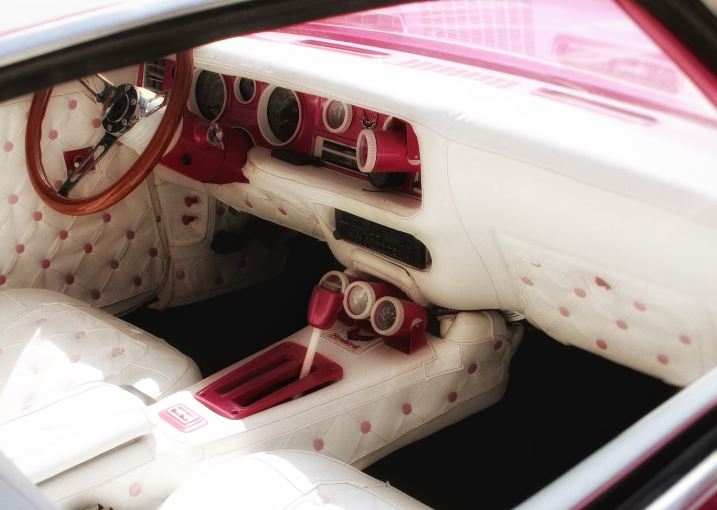In the world of automobiles, the dashboard serves as the command center, an interface between the driver and the vehicle. Over the years, the materials used to craft dashboards have undergone a fascinating evolution, transitioning from the era of plastic dominance to the luxurious embrace of leather. This journey not only reflects advancements in technology but also mirrors changing consumer preferences and the pursuit of a more refined driving experience.
Plastic Pioneers: The Early Years
The Birth of Plastic Dashboards
In the early days of automotive manufacturing, plastic emerged as a revolutionary material for dashboards. Its versatility, affordability, and ease of molding allowed for the mass production of vehicles, bringing mobility to the masses. Plastic dashboards became synonymous with durability and practicality, embodying the utilitarian ethos of the automotive industry in its infancy.
Aesthetic Limitations
While plastic dashboards were functional, they often lacked the aesthetic appeal that modern drivers seek. The monotony of colors and the perceived lack of sophistication led to a shift in the industry’s approach to dashboard design.
The Transition to a More Refined Era
The Rise of Soft-Touch Materials
As consumer expectations evolved, car manufacturers responded by introducing soft-touch materials in dashboard design. These materials, often a combination of polymers and other tactile substances, aimed to provide a more pleasant and comfortable touch. The transition marked a departure from the stark utility of plastic to a focus on enhancing the overall driving experience.
Leather’s Entrance: A Symbol of Luxury
The Advantages of Leather Dashboards
Aesthetic Appeal
The aesthetic appeal of leather dashboards is undeniable. The rich texture and timeless elegance associated with leather contribute to an elevated interior ambiance. From classic to contemporary car models, leather dashboards add a touch of luxury that transcends trends, making them a coveted feature among discerning drivers.
Comfort and Durability
Beyond aesthetics, leather dashboards offer a level of comfort and durability that enhances the overall driving experience. The supple nature of leather provides a soft touch, and its resilience ensures longevity, with proper care. This combination of comfort and durability underscores the practicality of choosing leather as a premium dashboard material.
Challenges and Considerations
Maintenance and Care
While leather dashboards exude luxury, they do require regular maintenance to preserve their appearance. Proper care, including cleaning and conditioning, is essential to prevent deterioration and ensure that the leather retains its allure over time.
Environmental Concerns
The shift towards leather raises environmental considerations, given its association with the livestock industry. Sustainable practices, such as the use of recycled leather or alternatives, are emerging as viable options for those seeking a balance between luxury and environmental responsibility.
The Future of Dashboard Materials
Technological Innovations
As technology continues to advance, the future of dashboard materials holds exciting possibilities. Innovations in synthetic materials, sustainable alternatives, and smart surfaces are poised to redefine the concept of car interiors. The quest for materials that seamlessly blend aesthetics, comfort, and environmental responsibility is an ongoing journey.
Personalization and Customization
The future of dashboard materials may also see an emphasis on personalization. Drivers may have the opportunity to choose materials that align with their individual preferences, allowing for a bespoke driving experience that goes beyond the standard offerings.
Navigating the Roads of Innovation
Beyond the dichotomy of plastic and leather, the automotive industry is witnessing a surge in innovative dashboard materials. Manufacturers are experimenting with a myriad of options, from sustainable fabrics to cutting-edge synthetics, aiming to strike the perfect balance between functionality, aesthetics, and ecological responsibility. These experiments herald a new era where dashboards are not just functional components but expressions of technological prowess and a commitment to sustainable motoring.
Sustainable Fabrics: Merging Style with Eco-Consciousness
A notable trend in this evolution is the exploration of sustainable fabrics as viable dashboard materials. From recycled textiles to plant-based alternatives, car interiors are becoming a canvas for eco-conscious design. The appeal lies not only in the reduction of environmental impact but also in the unique textures and patterns that these materials can introduce, adding a layer of individuality to each vehicle.
Smart Surfaces: A Glimpse into the Future
The integration of smart surfaces is another frontier in the quest for the ideal dashboard material. With the convergence of technology and design, dashboards are evolving into interactive interfaces. Touch-sensitive, illuminated, and even adaptable to the driver’s preferences, these smart surfaces redefine the relationship between the driver and the vehicle. As we move forward, the dashboard may become more than just an aesthetic element; it could transform into a dynamic hub of information and control.
Embracing Diversity in Design
In the midst of these advancements, there is a growing recognition of the diverse preferences of drivers. The one-size-fits-all approach is giving way to a more nuanced understanding of design diversity. Automakers are increasingly offering customization options, allowing drivers to choose not only the color of their dashboard but also the material that best suits their taste and lifestyle. This shift empowers drivers to create a personal sanctuary within their vehicles, making the driving experience truly their own.
Tailored Experiences: From Luxury to Minimalism
Whether it’s the opulence of leather, the eco-conscious vibe of sustainable fabrics, or the futuristic allure of smart surfaces, the evolving landscape of dashboard materials accommodates a spectrum of tastes. From those who seek the pinnacle of luxury to those who prefer a minimalist and utilitarian approach, the diversity in design ensures that every driver finds a dashboard that resonates with their individual style.
A Roadmap to the Future
As we navigate the roads of innovation and design diversity, the dashboard of tomorrow is likely to be a synthesis of functionality, sustainability, and personal expression. The ongoing dialogue between manufacturers and consumers, coupled with technological breakthroughs, promises a future where the dashboard is not just a static component but a dynamic reflection of the driver’s lifestyle and values. The journey from plastic to leather is just one chapter in this unfolding narrative, and the roads ahead are paved with possibilities, awaiting exploration and discovery.




